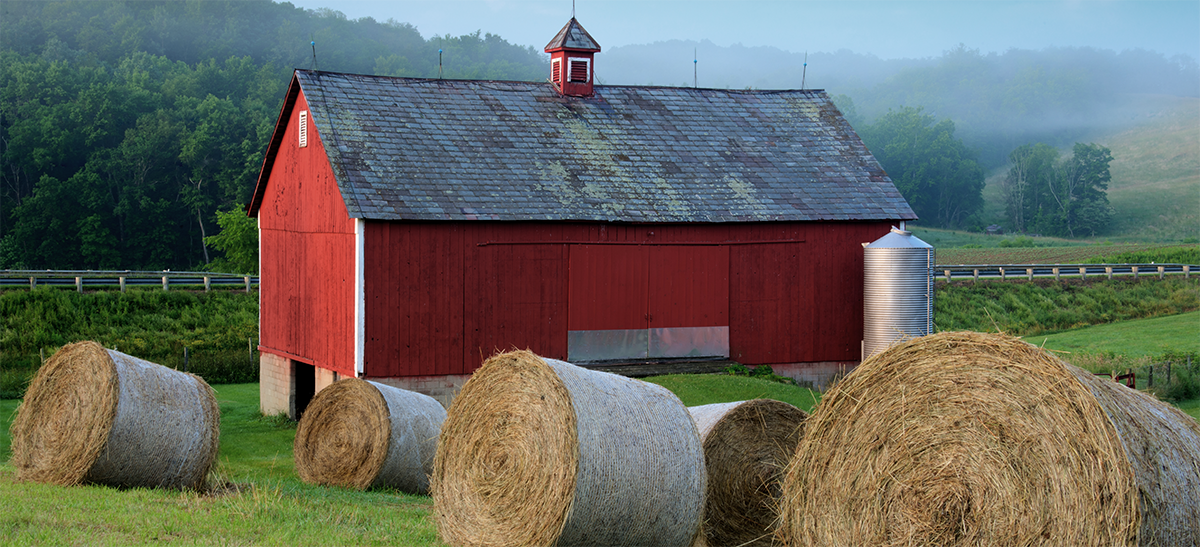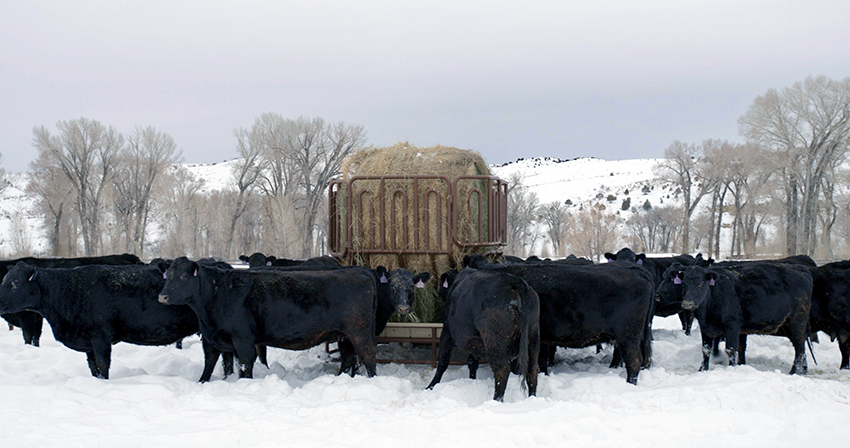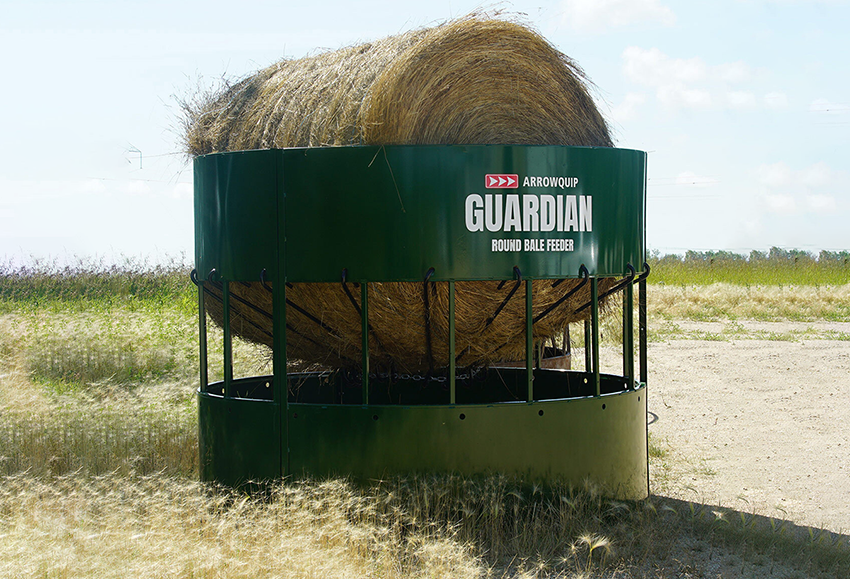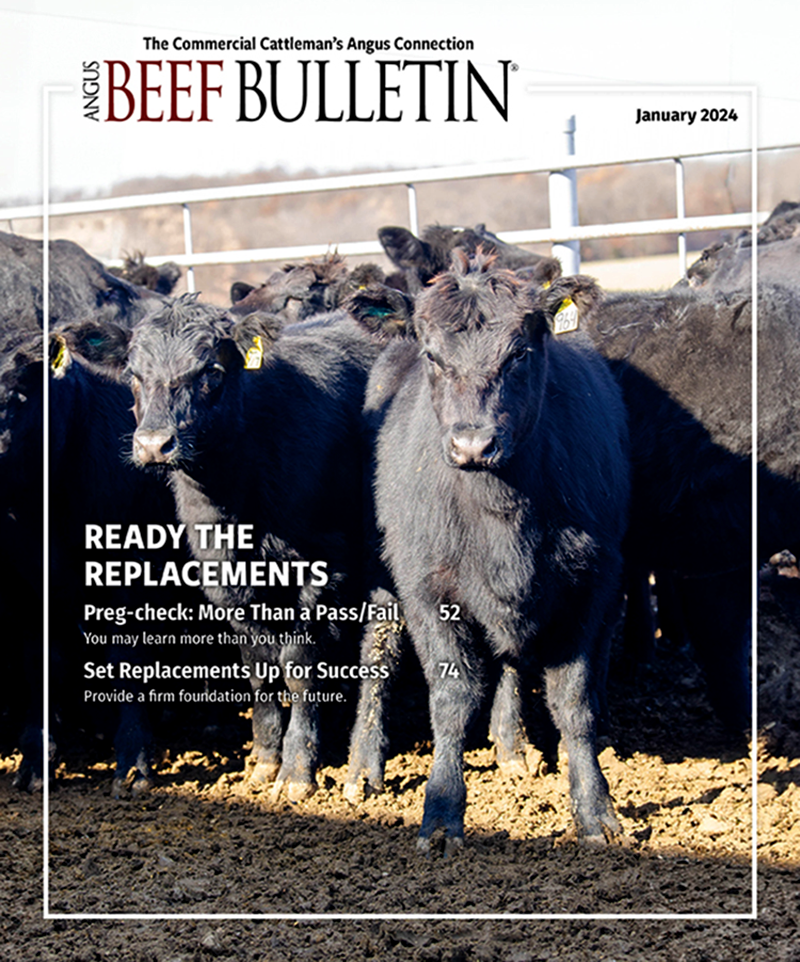
Stretching Winter Hay Supplies
Storage and feeding losses can equate to an extra big bale per cow this winter.
Got enough hay to make it to green grass? Maggie Justice, beef extension specialist for the University of Arkansas, offered tips for how to calculate whether you do and suggested ways to stretch winter hay supplies during a recent webinar hosted by the National Cattlemen’s Beef Association (NCBA).
“This is a struggle for many people, especially when they realize they may not have as much hay as they thought,” she said. Cow needs, hay quality, and storage and feeding losses all factor into how much hay you need to have on hand to get your cows through the winter.
Examples of hay rings that minimize wasted hay during feeding.  [Photo courtesy of Western Pro Feeders.] |
 [Photo courtesy Arrowquip.] |
First, calculate your hay needs, and send in a forage sample to learn the quality of the hay you have on hand, she said. Do you have enough to meet the minimum requirements of your herd for the next few months? This will partly depend on whether cattle are in late gestation or have already calved.
A 1,200-pound (lb.) lactating cow with average milk production eats about 2.5% of her body weight in dry matter per day, explained Justice. That equates to 30 lb. of dry matter. Using average-quality hay, we can figure she needs about 33.3 lb. of hay (as fed) per day. If we need to feed about 120 days before spring forage is ready to graze, each cow will need almost 4,000 lb. of hay. That works out to be about five big bales of hay per cow.
Then she clarified, saying, “We may actually need a little bit more. On average, the storage loss (since most people don’t have hay barns) might be up to about 28% of that hay.” If a person doesn’t have a hay shed, it pays to cover the stacks with tarps or black plastic. This not only reduces loss to weather, but also helps retain quality.
There will be some feeding loss because the cows probably won’t eat every bite of that hay. Justice said there are ways to minimize waste and stretch hay supplies. If the feeder ring is tight around the bale, a lot of hay will be pulled out onto the ground and wasted.
“Cows won’t eat what they step on and poop on, and maybe 10% of that bale will be waste. We might invest in larger hay rings or the ones with a cone shape, so the hay that’s pulled out falls down and remains in the ring and the cattle can eat it,” said Justice.
She encouraged her listeners to think about their feeding locations. Don’t continuously put bales in the same place, she said. This will create mud, tear up the pasture and cause even more waste. Consider rolling out the bale. It might take some extra time feeding, Justice acknowledged, but might save some hay and ensure that the cattle are getting what they need and not wasting it.
Feed location is important for the pasture and soil health, as well as minimizing hay waste. “Spreading out the feeding locations will spread out the waste (and manure and urine) and nutrients over the pasture,” she said.
Make sure you are feeding each group what it needs. Have your hay tested and prioritize. Use your best-quality hay and forages for cattle with higher needs, such as heifers you are developing, cows reaching peak lactation, etc. Dry cows and mature bulls might get by with lower quality, and utilize it efficiently with supplement, Justice concluded.
Editor’s note: Heather Smith Thomas is a freelance writer and cattlewoman from Salmon, Idaho. [Lead photo from Getty Images.]



